
Picture This


Hubble captures the beating heart of the Crab Nebula
This new NASA/ESA Hubble Space Telescope image reveals the beating heart of one of the most visually appealing, and most studied, supernova remnants known — the Crab Nebula in the constellation Taurus. At the centre of this nebula the spinning core of a deceased star breathes life into the gas that surrounds it.


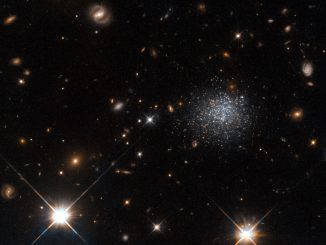
Hubble views a stubborn dwarf galaxy
The fuzzy collection of stars seen in this NASA/ESA Hubble Space Telescope image forms an intriguing dwarf galaxy named LEDA 677373, located about 14 million light-years away from us in the constellation Centaurus. This particular dwarf galaxy contains a plentiful reservoir of gas from which it could form stars, but it stubbornly refuses to do so. Why?
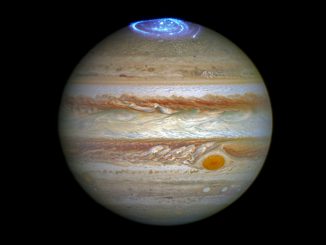
Hubble captures vivid aurorae in Jupiter’s atmosphere
Astronomers are using the NASA/ESA Hubble Space Telescope to study aurorae — stunning light shows in a planet’s atmosphere — on the poles of the largest planet in the solar system, Jupiter. This observation program is supported by measurements made by NASA’s Juno spacecraft, shortly to arrive at the gas giant.
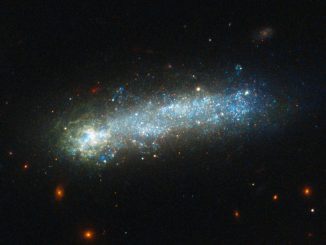
Hubble nets a cosmic tadpole
This new image from the NASA/ESA Hubble Space Telescope shows a cosmic tadpole, with its bright head and elongated tail, wriggling through the inky black pool of space. Tadpole galaxies are rare and difficult to find in the local universe. This striking example, named LEDA 36252, was explored as part of a Hubble study into their mysterious properties — with interesting results.
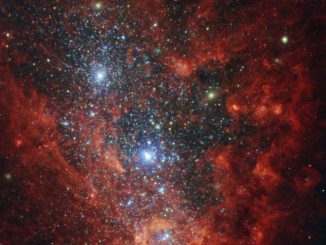
Hubble views the iridescent interior of a starburst galaxy
This NASA/ESA Hubble Space Telescope image reveals the glittering interior of one of the most active galaxies in our local neighbourhood — NGC 1569, a small starburst galaxy located about eleven million light-years away in the northern constellation of Camelopardalis. For almost 100 million years, NGC 1569 has pumped out stars over 100 times faster than the Milky Way.
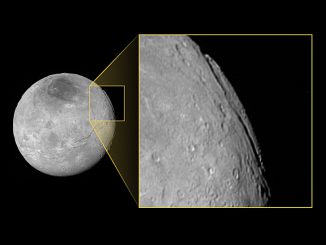
A ‘super Grand Canyon’ on Pluto’s moon Charon
Pluto’s largest moon, Charon, is home to an unusual canyon system that’s far longer and deeper than Arizona’s Grand Canyon. As far as NASA’s New Horizons scientists can tell, the canyon informally named Argo Chasma has a total length of approximately 430 miles — one and a half times the length and five times the depth of the Grand Canyon on Earth.
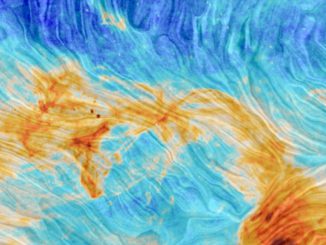
The spider in the loop
This multicoloured swirl of yellow and blue shows a prominent ring of gas near the North Celestial Pole. The pole appears to be fixed in place, while the rest of the night sky slowly circles around it because of Earth’s rotation. This image comes courtesy of ESA’s Planck satellite, which spent years mapping the entire sky in exquisite detail between 2009 and 2013.
